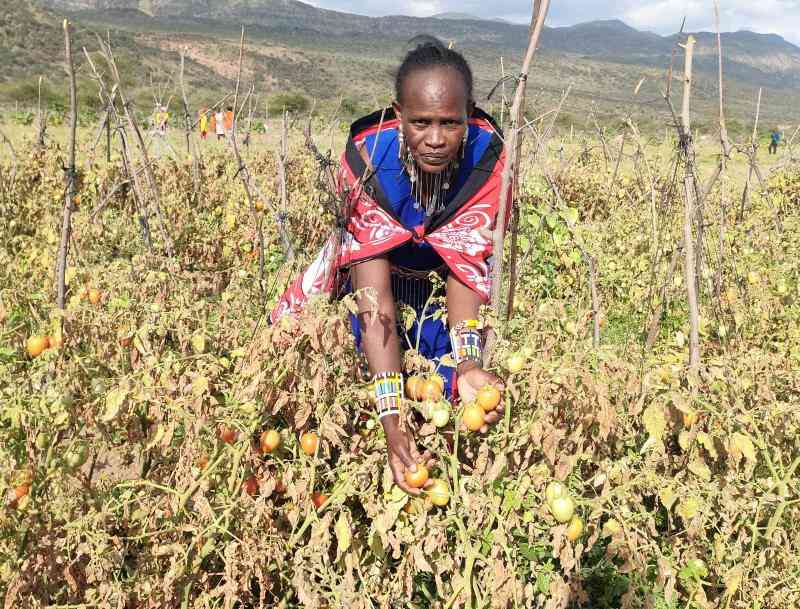Fertigation is the practice of applying fertiliser in liquid form to a crop via irrigation.
Minute amounts of fertiliser are regularly metered into the irrigation lines and distributed along with the irrigation water through the sprinkler heads. For fertigation, the irrigation system must be capable of distributing water uniformly. Using irrigation system to apply fertiliser reduces the need to use mechanical operations and sometimes eliminate them altogether.
The advantages of fertigation are numerous, it ensures a more efficient plant use of nutrients, a steadier growth rate, and savings on labour costs. Fertigation is not widely used yet, but could significantly improve nutrient application efficiency and water quality protection. In a nut shell fertigation is typically used to address fertiliser deficiency which inhibits plant growth, labour and operational efficiencies.
Advantages of Fertigation
When combined with an efficient irrigation system both nutrients and water can be manipulated and managed to obtain the maximum possible yield of marketable production from a given quantity of these inputs.
Fertigation permits the farmer to easily apply nutrients throughout the season.
Any nutrients in a soluble form are available for plant uptake right after application, allowing the farmer greater control over nutrient availability to the crop. These factors can lead to more efficient use of fertilisers.
Nutrients may be applied on a daily, weekly, or less frequent basis, depending on the overall nutrient management plan for the crop.
When nutrients are applied shortly before they are needed, growers are able to reduce loss of nutrients from the root zone. This is particularly important in areas with high rainfall, and for dissolved nutrients that leach readily, like nitrogen. Compared to methods of applying nutrients during the season that require tractors or foot traffic, fertigation reduces the potential for compaction and is less dependent on weather conditions.
When fertigation is used it should be included in the overall nutrient management plan for the crop or field. The total nutrients provided through fertigation plus other fertiliser applications should not exceed 100 per cent of the planned total nutrient application rate.
Scheduling fertiliser application
It is important to have nutrients available in the soil when the crop needs them, so they are typically applied before they are needed. We know nutrient uptake generally parallels crop growth. With this in mind, it makes sense to have most nutrients that will be needed by the crop in the soil by the time the crop begins rapid growth, and to apply the rest during the period of rapid growth. As the crop nears final harvest and/or growth slows, nutrient application may be tapered down and even stopped.
To plan for fertiliser application, it may help to make a chart showing each week of crop production from planting through harvest, indicate the approximate size of the crop at the beginning of each week, and then schedule fertiliser applications taking into account the timing of crop growth.
To determine when to start injecting fertiliser, several pieces of information are needed.
First, determine how long it takes water to reach the emitter furthest from the point of injection. Observe this during the first irrigation applications and make a note.
Next, determine how long it takes to inject the quantity of fertiliser desired. This may be done by timing an actual injection, or by calculations based on the volume of solution to be injected and flow rates of the irrigation system and pump. It may be helpful to monitor nutrient flow by injecting natural food colouring as a marker.
Nutrients must be completely flushed out of the irrigation system after injection to keep drip lines clean and prevent clogging. If clogging becomes a problem, it may help to open ends of the laterals and flush water through the drip tape and out the ends of the lines periodically.
Stay informed. Subscribe to our newsletter
Fertiliser application
The fertiliser solution in liquid form is fed into the system at low rates repeatedly, on a continuous basis, during irrigation. The flow rate of the injector should be such that the calculated amount of solution is supplied at a constant rate during the irrigation cycle, for instance starting fertigation right after the system starts operation and finishing a few minutes before the operation ends.
Regarding the choice of the fertilizers, apart from the amount and the kind, other parameters need to be considered, such as solubility, acidity, compatibility and cost.
For fertiliser to be effectively delivered by irrigation, it must be soluble, and/or any undissolved particles must be able to travel through the irrigation system without causing blockages. There are many organically approved liquid fertilisers and powdered fertilisers that are completely soluble. The fertiliser stock solution should always be dissolved in a separate container and then poured into the suction tank. The types of fertiliser should be highly soluble and when dissolved in water must not form scums or sediments which might cause emitter clogging problems. The solution should always be agitated, well stirred and any sludge deposited in the bottom of the tank should be periodically removed.
The injector suction pipe should not rest on the bottom of the tank. Hot water helps dissolve dry fertilisers.
The acidity produced by the several forms of nitrogen varies from type to type and is greatly affected by the kind of irrigation water and the type of soil. At least one check on the soil pH should be carried out at the beginning of the season and one at the end.
Furthermore, a complete ionic analysis of the water is necessary.
A simple method for calculating the amount of fertiliser required for fertigation is to divide the annual application by the number of irrigations. Various recipes have been developed in different countries based on the conventional nutrition dosages. The total quantity of fertilisers applied is also related to the length of the growing season and the irrigation requirements.
Hot tips
Maintain a neat storage, mixing and injection area. This promotes safe handling, and facilitates early recognition and clean-up of any spills.
Prevent drainage from the mixing area into streams, dams or bores.
Prevent back-flow from the irrigation lines into the water supply. This is more likely to occur where suction systems, on the inlet side of the pump, are used to introduce fertiliser solutions. Allow excess water to re-enter reticulated water supplies for use on other irrigated fields where the same crops are grown.
Livestock should be denied access to tail-water to avoid any risk of urea or nitrate poisoning.
Prepare fertiliser solutions as close as possible to the time of use. Do not allow to stand for an extended period of time for instance overnight.
This can help minimise precipitation and settling in mixing tanks in some instances. Inject fertiliser solutions upstream of filters, so that insoluble contaminants are screened out.
- The writer is an expert on agricultural solutions and sustainable agriculture
 The Standard Group Plc is a
multi-media organization with investments in media platforms spanning newspaper
print operations, television, radio broadcasting, digital and online services. The
Standard Group is recognized as a leading multi-media house in Kenya with a key
influence in matters of national and international interest.
The Standard Group Plc is a
multi-media organization with investments in media platforms spanning newspaper
print operations, television, radio broadcasting, digital and online services. The
Standard Group is recognized as a leading multi-media house in Kenya with a key
influence in matters of national and international interest.
 The Standard Group Plc is a
multi-media organization with investments in media platforms spanning newspaper
print operations, television, radio broadcasting, digital and online services. The
Standard Group is recognized as a leading multi-media house in Kenya with a key
influence in matters of national and international interest.
The Standard Group Plc is a
multi-media organization with investments in media platforms spanning newspaper
print operations, television, radio broadcasting, digital and online services. The
Standard Group is recognized as a leading multi-media house in Kenya with a key
influence in matters of national and international interest.






